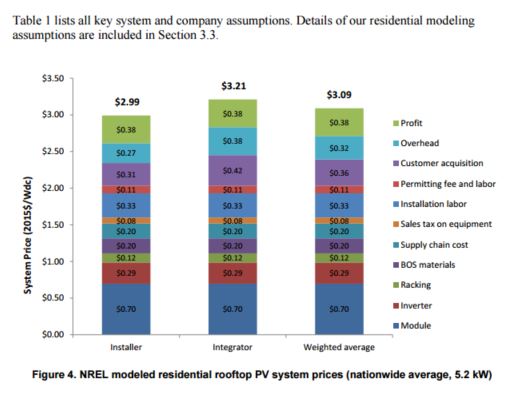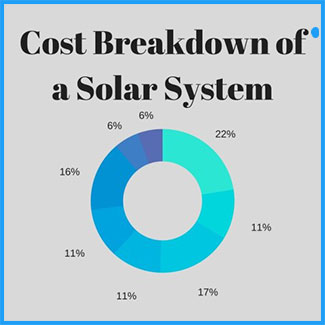When purchasing a solar system it is important to understand its main components so you know what you are paying for, and if you are overpaying.
This is especially important if you are purchasing a solar-lease. You might be leaving a lot of money (savings) on the table if you are leasing a solar system versus owning or financing one.
Getting back to the main components of a solar system. There are really 3 main components to most grid-connected photovoltaic solar systems. These are:
1) the solar panels also called the solar modules
2) the inverter or inverters
3) the racking
As of mid-2015, the equipment costs of a typical residential solar system breakdown as follows:
Panels – 0.80 / watt
Inverter – 0.30 / watt
Racking – 0.30 / watt
Balance of system – 0.30 / watt
TOTAL: ~$1.70 / watt (for equipment)
On top of the equipment costs, the installer will incur various other “soft” costs like installation labor, sales & marketing costs, design, permitting, and project management. Here is a breakdown of average costs from a study that National Renewable Energy Laboratory (NREL) conducted. Based on this study the average cost of a residential solar system was $3.09 per watt in 2015 in the US.

In a recent presentation hosted by SDG&E and presented by Center for Sustainable Energy the presenter shared with the audience that the cost of a solar installation can range anywhere between $3 per watt to $6 per watt. The major factors that drive the wide range in pricing are follows:
1) Marketing costs
2) Roof replacement
3) Electrical panel upgrade
4) tree trimming
5 trenching (for ground mount installations)
If you are working with a local electrical contractor who you already know, obviously that contractor is not incurring the same level of high marketing sales costs as a large national solar company who sells with an aggressive sales force and on the premise of its brand. The “sales & marketing” costs end up being as high as $0.60 / watt. About 15-20% of the entire cost of an average solar install.
There could also be some other major costs that increase the cost of an installation. Roof replacements could cost $10,000 or more. But it is not always fair to include the roof replacement cost as part of the solar system since it is an expense that needs to be realized every 20-30 years or so. The other most common cost is the electrical panel upgrade. While most solar systems will not require this upgrade, when an upgrade is needed, it could increase the cost of an install by $1000-$2000 in most cases.
The above discussion covered the cost structure for residential systems which usually range in size between 4kw to 15kw. Once the system size goes up above 100kW, it is quite possible to build a system for a cost of $2.50 / watt or below.

